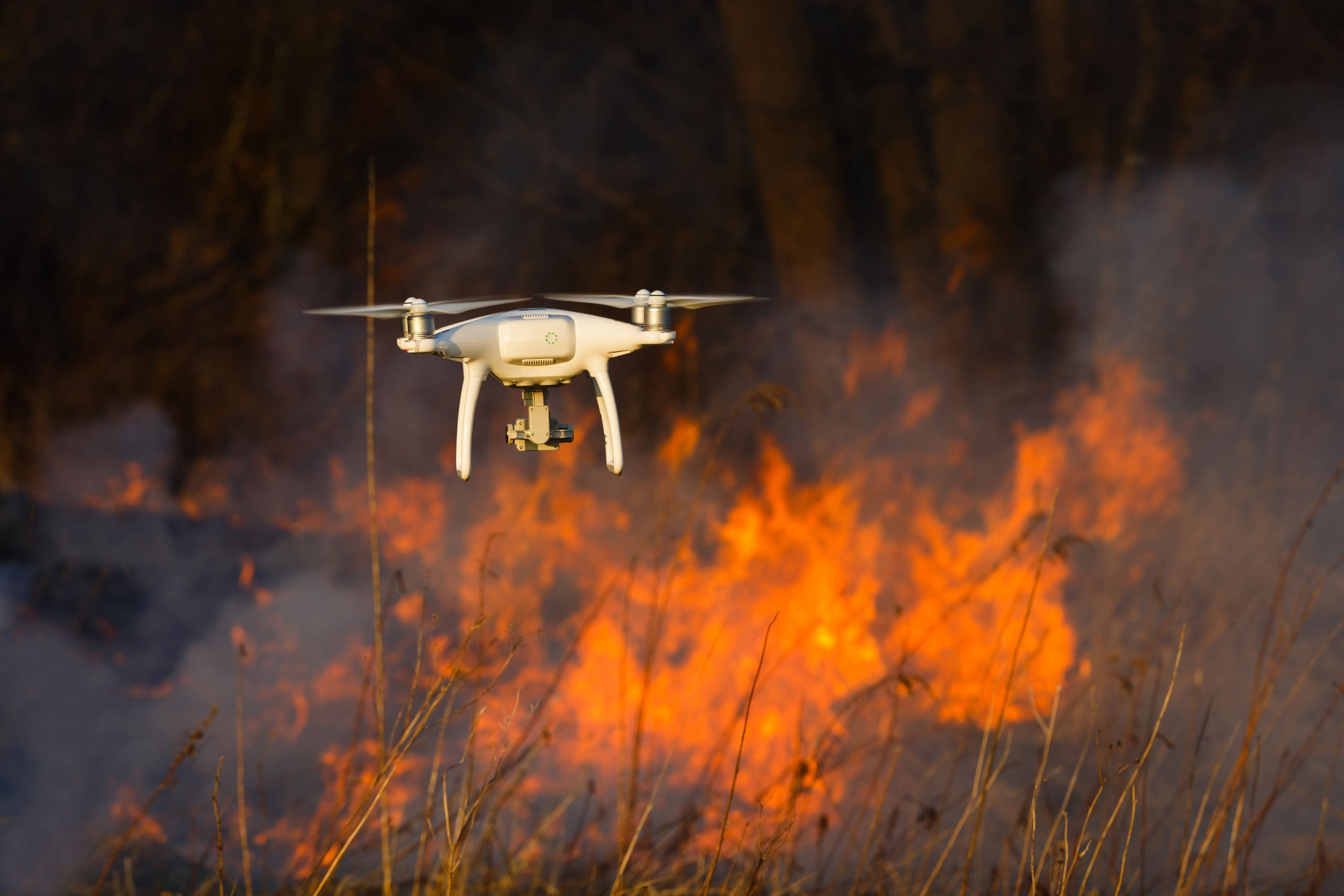
In 2020, California suffered from a record-breaking 52,113 wildfires. With the state of the environment, the situation is looking dismal. Every year, thousands of firefighters and millions of dollars worth of resources are used to combat forest fires. In the efforts, firefighters employ a limitless array of tactics, systems, and technology to help keep people safe. As technology has gotten more accessible and affordable, firefighter teams are increasingly turning to drones to help in everything from situational awareness to information gathering.
Drones use multiple electro-optical and thermal sensors, along with aerial imaging, to provide instant and actionable intelligence, regardless of the wildfire situation, to a commander. They’re enormously beneficial to any firefighting crew. They make the entire process far more efficient, far less dangerous, and help effectively deploy resources to where they’re needed most. And that’s only scratching the surface. Let’s take a look at how drones help firefighters around the world combat forest fires.
Drones Quickly Help Assess a Forest Fire Situation
Given its ability to get into a dangerous situation quickly, a drone can help firefighter commanders decide within a few moments what kind of resources to send into the fire. Many drones are equipped with thermal sensors. These are able to utilize infrared radiation to help crews find heat signatures of both people and fire hotspots.
With the information provided in these first moments of an active fire, commanders can safely make informed decisions from their computer before the real battle begins. This kind of rapid, in-depth information can make all the difference in the world when it comes to battling wildfires. It’s the kind of information that saves lives, lowers resource cost, as well as determining the trajectory of the entire firefight.
Drones Provide Superior Intelligence for Decision Making
Drones don’t just help with the initial response of fighting a fire. Forest fires require large-scale operations with minute-by-minute decisions about where and how to deploy resources and personnel. As with any decision, the more information and intelligence you have, the better the decision.
Drones are superior intelligence gatherers. They’re capable of capturing data, visuals, topography, and heat signatures in wildfires and sending their findings back to the commander. With all of the information, in addition to an up-close aerial view, commanders benefit from being able to make decisions based on information they wouldn’t otherwise have. This makes the entire process far more efficient, saving the environment and potentially lives too.
Drones Protect Personnel
Every situation involving a drone instead of a human being is an opportunity to save a life. Forest fires are immensely dangerous and incredibly stressful to combat. Using drones instead of feet on the ground, firefighting crews risk a more modest amount of resources.
Drones also help commanders monitor the men and women who are on the ground and in the fight. They help them make the right decisions on whether an area is safe enough to enter and in which direction the crew should move. This helps keep them safe and avoid unnecessary danger.
Another way that drones help with protecting personnel is by replacing manned aircrafts. Plumage and smoke from active forest fires create dangerous flying situations with little visibility. By using drones to provide accurate intelligence, commanders can remove pilots from unnecessary dangers.
Moreover, manned aircrafts simply can’t fly as low and get into places that a drone can. Even a helicopter has to remain at a safe distance from a raging fire. Not only does using a drone in place of a pilot potentially save lives, but it provides firefighting crews with better information and intelligence.
Rapid Mapping for Response and Recovery
Drones are truly helping to revolutionize the world of firefighting. They have a wide array of sensors and cameras that provide firefighting crews with a wealth of information about fires. Commanders can see real-time aerial views of the situation, along with thermal and heat signature readings from their crew and the fire itself.
They’re far more agile and can get into places that typical manned aircraft just can’t access. And for that matter, shouldn’t be accessing unnecessarily. Better still, drones can read situations. They can identify and locate people who could be trapped, giving firefighters the necessary intelligence to save lives.
Given their utility, drones are also extremely useful during the recovery period once a forest fire has been contained. In some instances, drones can be used to help assess the damage caused to residential and commercial structures, providing victims with valuable information that helps with insurance claims. These assessments can help move things along more quickly so victims of these unfortunate events can begin rebuilding their lives.
Drones: Firefighting Tool of the Future
Given how quickly drones have joined firefighting teams, it seems possible that there will soon be flocks of them flying over and combatting all sorts of fires in the years to come. That said, it’s critical to understand that as critical as they, it’s boots on the ground that put out fires.
Drones will never replace the kind of courageous and skilled person it takes to fight and contain forest fires. But they are joining the ranks of firefighting forestry equipment. They give commanders information and intelligence that allows them to make the best possible decisions, leading to the best possible outcomes. And it’s these frontline fighters, operators, and incident managers who will decide on the best tools to use to improve firefighting.
Fires are terrible events capable of destroying environments, wildlife, homes, businesses and—in the worst instances—human life. Therefore, any tool that helps contain these terrible events is an immense blessing. Drones are one of those tools and an incredibly effective one at that.

